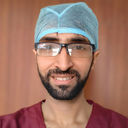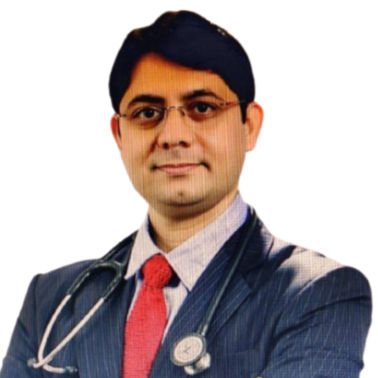Varicose Veins: Understanding the Condition and How to Treat It
Varicose veins are spider veins on skin surfaces, especially legs and feet. Read about its causes, symptoms, risk factors, diagnosis, and treatment procedures.

Written by Dr Sonia Bhatt
Last updated on 3rd Jul, 2025
Varicose veins are the swollen or twisted veins visible under the skin surface, often seen on the legs and feet. Inefficient valve functioning in the veins usually causes conditions that can affect individuals in many ways, preventing adequate blood flow to the heart.
Here’s more on the cause, risk factors, symptoms, and treatment options of varicose veins.
What Causes Varicose Veins?
One-way valves in veins prevent the backwards flow of the blood, allowing continual blood flow to the heart. However, when valves stop functioning correctly, the blood gets collected in the veins and enlarges them, causing varicose veins. This condition mostly affects the legs and interrupts the blood flow to one’s heart.
Here are some of the factors that cause varicose veins:
Obesity
Ageing
Menopause
Standing for extended periods
Pregnancy
Family history
Risk Factors of Varicose Veins
The following are the factors that increase the risks of varicose veins:
Age: Individuals above 50 years of age are often diagnosed with varicose veins due to wearing valves that control blood flow in the veins. Due to this, blood flows back into the veins and accumulates in them, causing varicose veins.
Gender: This condition is mostly prevalent in women as they deal with hormonal changes on several occasions, like menopause, pregnancy, etc. As hormones relax in the walls of veins, hormonal changes often trigger varicose veins.
Occupational Hazards: Individuals working in retail or desk jobs often develop varicose veins as they need to stand or sit for long hours. Healthcare professionals such as nurses need to perform physical activities like moving or lifting for long hours, increasing the risks of varicose veins.
Pregnancy and Hormonal Changes: Blood volume in a woman’s body increases during pregnancy to support the baby’s growth. It usually develops due to hormonal changes, but this enlarges the veins in the woman’s legs, leading to varicose veins. Women who are in menopause or take birth control pills experience high levels of hormonal changes, which can also cause varicose veins.
Symptoms and Signs of Varicose Veins
Some symptoms of varicose veins are visible, while others are physical. Here are some of them:
Spider veins (tiny veins) on the surface of one’s skin
Leg pain, heaviness, or fullness
Swelling of ankle or feet
Cramps on calf or thigh, usually at night
Swollen veins
Itching on the area where varicose veins develop
Restlessness in legs
Here are some more symptoms that an individual with varicose veins can develop in worse conditions:
Pain in the calf or leg after standing or sitting for a long time
Irritated, dry, and scaly skin
Swelling of the legs
Changes in skin colour of one’s legs or ankles
Ulcers or sores on the skin
The skin of the legs and ankles getting thick and hard, etc.
Consult Top Doctors for Your Symptoms
Diagnosis of Varicose Veins
Healthcare providers can ask for both physical and medical tests to diagnose the varicose veins in an individual.
Physical Examination: Varicose veins are easily visible as they are close to one’s skin surface. Doctors can feel and examine these veins when the individual with varicose veins is standing or sitting. During a physical examination, they can also ask questions about the patient’s medical history or symptoms of varicose veins.
Ultrasound and Imaging Tests: Though additional diagnostic tests are not necessary to look for varicose veins as they have visible symptoms, doctors often recommend an ultrasound. This helps detect the complications (if any) as ultrasound provides detailed images of the veins.
Potential Complications of Varicose Veins
If left undiagnosed or untreated, varicose veins can bring the following complications:
Chronic Venous Insufficiency: In this condition, one’s veins cannot adequately pump blood to the heart. It occurs when an individual has severe varicose veins.
Bleeding: Varicose veins are mainly close to one’s skin and can burst into bleeding.
Blood Clots: Individuals with varicose veins are more likely to develop deep vein thrombosis (DVT). In this condition, blood clots in one's veins, which are deep inside the body.
Ulcers: Individuals with varicose veins often develop open sores or ulcers on the skin close to the affected veins. These ulcers are painful and cannot be treated easily.
Treatment Options for Varicose Veins
Doctors use the following procedures if the individual has a small number of varicose veins:
Phlebectomy: In this procedure, the damaged vein is removed from the legs by making small surgical cuts near them.
Sclerotherapy: In this procedure, doctors inject a chemical solution or salt water into varicose veins, which disappear due to hardness.
Radiofrequency: This procedure is adopted if an individual has longer and larger varicose veins on their legs. It requires professional intervention and is performed in a doctor's chamber.
Here are some self-care tips that a doctor may advice to manage conditions like varicose veins:
Avoiding standing or sitting for a long time
Keeping the legs moving slightly to maintain blood flow
Taking care of open sores or ulcers
Wearing compression stockings to reduce the swelling
Gently squeezing the legs and allow the blood to move upward to the heart
Regularly swimming or walking to reduce weight
Using moisturiser and consulting doctors for antibiotic ointments
Raising the legs above one’s heart for 15 minutes, at least 3 to 4 times a day
Some additional preventive measures that can reduce the risks of varicose veins include:
Quitting smoking and drinking
Raising the feet on a pillow while sitting or sleeping
Exercising regularly
Changing positions frequently while standing or sitting for long periods
Avoiding high heels or shoes that limit ankle movement
When to See a Doctor?
Individuals should contact their healthcare provider upon noticing any of these symptoms:
Pain in the area where varicose veins have developed
Sudden increase in swelling, redness, or pain in the legs
Severe leg sores, etc.
Conclusion
Varicose veins are a common condition ranging from a cosmetic concern to a significant health issue. Recognising its causes, diagnosis method, and complications is essential to manage the condition effectively.
By making informed lifestyle choices and seeking timely medical advice when necessary, individuals can reduce their risk of developing varicose veins and maintain overall vascular health.
Consult Top Cardiologists
Consult Top Doctors for Your Symptoms

Dr. Sumanta Chatterjee
Cardiologist
12 Years • MBBS,MD General Medicine,DM Cardiology
Kolkata
HealthYou Speciality Clinic & Diagnostics., Kolkata
(25+ Patients)

Dr. Amit. A. Bharadiya
Cardiologist
12 Years • MBBS, MD General Medicine, DNB Cardiology
Maharashtra
Surabhi Hospital, Maharashtra, Maharashtra

Dr. Pinaki Nath
Cardiologist
8 Years • MBBS, MD General Medicine, DM Cardiology
Barasat
Diab-Eat-Ease, Barasat
Dr. Dixit Garg
Cardiologist
10 Years • MBBS , DNB (General medicine) , DNB (cardiology)
Gurugram
Smiles & Hearts, Gurugram

Dr Yogendra Singh Rajput
Cardiologist
16 Years • MBBS, MD (General Madicine), DM (Cardiology)
Gurugram
Svasthya Child & Cardiac Care, Gurugram
Consult Top Cardiologists

Dr. Sumanta Chatterjee
Cardiologist
12 Years • MBBS,MD General Medicine,DM Cardiology
Kolkata
HealthYou Speciality Clinic & Diagnostics., Kolkata
(25+ Patients)

Dr. Amit. A. Bharadiya
Cardiologist
12 Years • MBBS, MD General Medicine, DNB Cardiology
Maharashtra
Surabhi Hospital, Maharashtra, Maharashtra

Dr. Pinaki Nath
Cardiologist
8 Years • MBBS, MD General Medicine, DM Cardiology
Barasat
Diab-Eat-Ease, Barasat
Dr. Dixit Garg
Cardiologist
10 Years • MBBS , DNB (General medicine) , DNB (cardiology)
Gurugram
Smiles & Hearts, Gurugram

Dr Yogendra Singh Rajput
Cardiologist
16 Years • MBBS, MD (General Madicine), DM (Cardiology)
Gurugram
Svasthya Child & Cardiac Care, Gurugram
